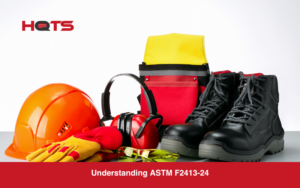In the competitive world of home appliances, washing machines stand out as essential items that consumers rely on for daily chores. But what happens when a batch of these machines arrives with defects like scratches, poor printing, or even missing safety components? The result can be costly returns, damaged reputations, and lost trust. This is where quality inspections come into play, particularly pre-shipment inspections that catch issues before products leave the factory. In this article, we’ll explore the ins and outs of washing machine quality inspections, including a real-world case study from a recent inspection report. Whether you’re a buyer, manufacturer, or importer, understanding these processes can help you avoid pitfalls and deliver top-notch products.
Why Quality Inspections Matter for Washing Machines
Washing machines are complex devices involving mechanical parts, electrical systems, and water-handling components. A single flaw—such as a weak motor or improper sealing—can lead to breakdowns, leaks, or safety hazards. Quality inspections ensure that these appliances meet standards for performance, durability, and safety. For businesses sourcing from overseas, like many do from manufacturers in Asia, third-party inspections provide an unbiased check against specifications.
Key benefits include:
- Reducing Defects: Early detection prevents faulty products from reaching customers.
- Compliance with Standards: Adhering to international norms like ISO 2859 for sampling and AQL (Acceptable Quality Limit) levels.
- Cost Savings: Avoiding recalls or rework after shipment.
- Building Trust: Consistent quality strengthens brand loyalty.
According to industry reports, up to 20% of imported appliances face quality issues without proper checks. For washing machines, common problems include surface defects, electrical failures, and packaging inadequacies that lead to damage during transit.
The Pre-Shipment Inspection Process
Pre-shipment inspections (PSI) occur when at least 80% of the order is produced and packed. Inspectors from firms like HQTS or similar services visit the factory to evaluate a random sample. The process follows established protocols:
- Sampling Plan: Based on ISO 2859, which uses statistical methods to select samples. For a 240-piece order, a General Inspection Level II (G-II) might involve checking 32 units.
- AQL Standards: Defects are classified as critical (safety risks, tolerance 0), major (functional issues, e.g., 1.5), or minor (aesthetic, e.g., 4.0). If defects exceed allowed limits, the batch fails.
- Key Checks Performed:
- Quantity and Packaging: Verify counts, carton dimensions, and shipping marks.
- Workmanship: Inspect for visual defects like scratches, dents, or dirty marks.
- Style, Color, and Documentation: Ensure matches with purchase orders, specs, and data forms.
- Field Tests and Measurements: Include power consumption, noise levels, rotation speeds, stability, and drop tests.
- Functional Tests: Hi-voltage, earth continuity, assembly, and performance under load.
Inspectors document findings with photos and measurements, leading to a conform, not conform, or pending verdict. Pending items often require factory fixes or further verification.
Common Defects in Washing Machine Inspections
From years of handling appliance inspections, certain issues recur. Surface imperfections, such as poor silk-screen printing or impurity marks, are frequent minor defects. These might seem trivial but can affect perceived quality. Internal problems, like missing thermal protectors on motors, pose safety risks and often result in pending status.
Electrical tests are crucial: Power cords must withstand strain, and consumption should align with specs (e.g., 300-315W for washing at 230V). Noise levels, ideally under 60dB, and motor speeds (around 1500 RPM for spinning) ensure quiet, efficient operation. Packaging must protect against drops, with cartons sealed properly to prevent damage.
Case Study: A Real-World Washing Machine Inspection
To illustrate the value of these inspections, let’s examine a specific case from a pre-shipment report conducted by HQTS for a batch of 240 washing machines. The order, under PO No. XXXX, involved twin-tub models destined for export. Inspectors used ISO 2859 single normal sampling at G-II level, selecting 32 pieces for detailed checks. AQL was set at critical 0, major 1.5, and minor 4.0.
Inspection Setup and Overall Findings
The inspection took place at the factory in XXXX, focusing on quantity, workmanship, style/documentation, field tests, and packaging. The batch was fully produced and packed, but the final conclusion was “Not Conform” to client requirements. Quantity and shipping marks conformed, but workmanship failed, while style/documentation and field tests were pending.
Workmanship Issues
This category revealed the most problems. Out of 32 samples, no critical or major defects were found, but minor defects totaled 8—exceeding the allowed 3. Specific issues included:
- Poor silk-screen printing (3-6mm) on 2 units.
- Impurity marks (1mm) on 2 units.
- A dent (5mm), slight deformation (4mm), scratch (8mm), and flash mark (3mm) each on one unit.
Additionally, all 32 samples had dirty marks inside the product, classified as minor but widespread. Photos showed these as small spots on internal surfaces, likely from manufacturing residue. Functional checks like hi-voltage, earth continuity, power consumption, and basic operation passed, but the aesthetic defects tipped the scale.
Style, Color, and Documentation Pending
Samples matched the purchase order and product specs, but a key discrepancy arose: No motor thermal protector was found, despite being listed on the Construction Data Form (CDF). This safety feature prevents overheating, and its absence could lead to fire risks. Other client notes, like checking black leather cuffs for glue and spare parts lists, were verified positively.
Field Tests and Measurements Pending
Most tests conformed, with measurements close to specs:
- Carton dimensions: Actual 760x440x865 cm vs. specified 765x440x870 cm (+/-5%).
- Gross weight: 18.38 kg vs. 18.5 kg (+/-10%).
- Product weight: Averaged 16.5 kg vs. 16 kg.
- Dimensions: Around 706-707x400x835 mm.
- Power cord length: 164-167 cm.
- Capacity: 68.2 L.
- Noise: 59.2-60.2 dB (environmental 55.6 dB).
- Spin motor speed: 1500-1519 RPM.
- Wash motor speed: 180-186 RPM.
- Power consumption: Washing 248-258W (220V), spinning 113-118W; max loading 424-433W.
Times accuracy for cycles was spot-on (e.g., spin 300 seconds). However, the manufacturer refused the carton drop test, leading to pending status. This test simulates shipping mishandles, and its omission raised concerns about packaging durability.
Packaging and Shipping Marks
These conformed, with each machine in a poly bag inside a 5-ply corrugated carton, sealed with tape and nylon straps. Shipping marks were clear, as shown in photos.
Reference Notes and Photos
The report noted uncalibrated weighing equipment, unsealed cartons post-inspection, no production samples for reference, and a request for defect repairs. The factory lacked 60Hz equipment for full power tests. Extensive photos documented warehouse stacks, export cartons, product views from multiple angles, internal components, defects, and test setups.
Outcomes and Resolutions
The “Not Conform” verdict stemmed from exceeded minor defects and pending items. The inspector recommended repairs, and the factory was urged to calibrate tools and allow full testing in future. This case highlights how inspections protect buyers—without it, the batch might have shipped with hidden issues, leading to customer complaints.
In the end, the client could negotiate fixes or reject the shipment, saving potential losses. This inspection cost a fraction of what rework or returns would have.
Lessons from the Case Study
This example underscores several takeaways:
- Aesthetic Matters: Minor defects like dirty marks can fail an entire batch if widespread.
- Safety First: Missing components like thermal protectors demand immediate attention.
- Cooperation Key: Factory refusal of tests (e.g., drop test) delays approvals.
- Documentation Vital: Aligning with CDF and PO prevents discrepancies.
For manufacturers, addressing these early improves processes. Buyers should specify detailed instructions, like glue checks on cuffs.
Conclusion: Invest in Quality for Long-Term Success
Washing machine quality inspections are more than a checkbox—they’re a safeguard for reliability and satisfaction. By incorporating pre-shipment checks, businesses can mitigate risks in global supply chains. As seen in our case study, even small issues can halt shipments, but proactive measures turn potential problems into opportunities for improvement.
Companies like HQTS play a vital role in this process, offering comprehensive third-party inspection services that verify product quality, quantity, and compliance with specifications. With operations spanning over 40 countries and a history dating back to 1995, HQTS provides pre-production, during-production, and pre-shipment inspections, along with factory audits and product testing to ensure appliances like washing machines meet safety and performance standards. By partnering with HQTS, buyers can catch defects early, enforce supplier accountability, and maintain consistent quality across global supply chains, ultimately reducing returns and boosting customer trust. If you’re sourcing washing machines, engaging HQTS for tailored inspections can help every unit perform reliably, meeting regulations and enhancing your market position. Remember, a well-inspected appliance is one that keeps customers coming back.




